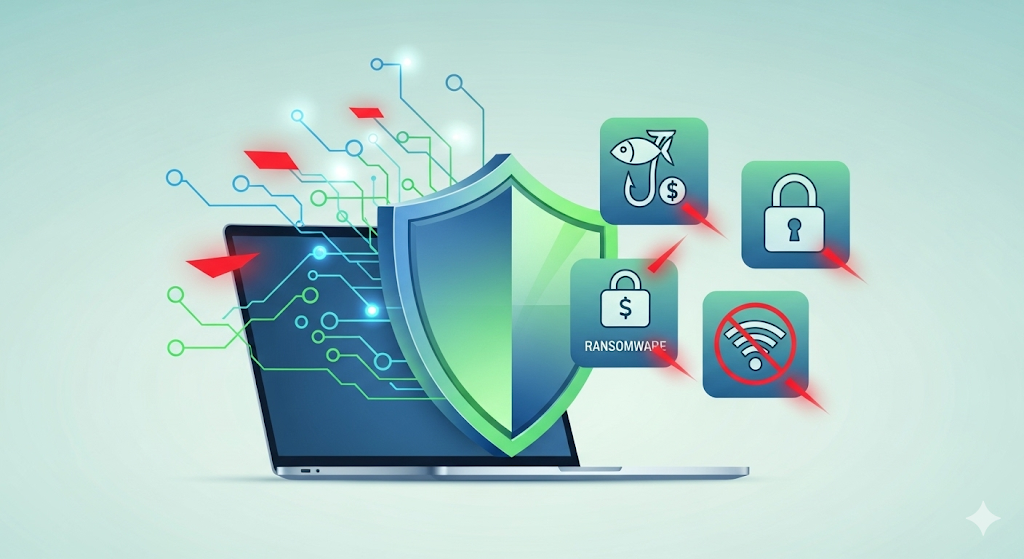The Invisible Threat
In March 2024, a midsize company in Germany lost €2.3 million after a single employee clicked on a phishing email. The attacker had crafted a fake invoice, the employee thought it was legitimate, and within hours the company’s bank accounts were drained.
Hacker attacks don’t always look like Hollywood movies. Most of the time, they’re simple tricks that target human error – and they happen thousands of times every day.
So how do hackers really work, and what can you do to protect yourself? Let’s dive in.
Methods Hackers Use
Hackers aren’t magicians – they use well-known methods that exploit weak spots in our behavior and technology. Here are the most common ones:
1. Phishing 2.0
Fake emails, SMS messages, or websites designed to steal your login details. Modern phishing goes beyond text:
- Deepfake voices pretending to be your boss.
- QR code phishing that hides malicious links.
- Phishing kits anyone can buy on the dark web.
Takeaway: Always check the sender’s domain, and hover over links before clicking. If in doubt, verify by phone.
2. Credential Stuffing
Billions of leaked usernames and passwords circulate on the dark web. Hackers use automated tools to try these credentials on popular services like Gmail, Netflix, or corporate VPNs.
Takeaway: Never reuse passwords. A password manager is your best friend here.
3. Ransomware-as-a-Service (RaaS)
Hacking has become a business model. For a small monthly fee, criminals can “subscribe” to ready-made ransomware tools, infect victims, and split profits with the developers.
Takeaway: Regular backups and updates are the best defense. If ransomware hits, you’ll be glad you have them.
4. Social Engineering
Sometimes, the easiest hack is a phone call. A hacker pretends to be IT support, a delivery company, or even a colleague. With the right tone of voice, they can trick people into revealing confidential information.
Takeaway: Never share passwords or internal details over the phone unless you initiated the call.
5. Public Wi-Fi & Man-in-the-Middle Attacks
Public networks are a goldmine for attackers. With the right tools, they can intercept your communication, read your emails, or even hijack your session.
Takeaway: Use a VPN whenever you connect to public Wi-Fi.
Real-World Case Studies
- Colonial Pipeline Hack (2021): One single leaked VPN password without MFA shut down fuel supply to the US East Coast for nearly a week.
- Twitter Bitcoin Scam (2020): Hackers tricked employees over the phone, gaining access to high-profile accounts like Elon Musk’s and spreading crypto scams.
- Hospital Ransomware (2023): A European hospital had to cancel surgeries after attackers encrypted patient data and demanded millions in ransom.
These examples show how simple mistakes can lead to devastating consequences.
Final Checklist: Protect Yourself Today
Here are the 7 quick wins you can implement right now to make yourself a harder target:
- Enable MFA (Multi-Factor Authentication) on all important accounts.
- Use a password manager to generate unique, strong passwords.
- Keep your devices and software up to date.
- Be skeptical of unexpected emails and messages.
- Use a VPN on public Wi-Fi.
- Back up your data regularly to an external drive or cloud service.
- Train yourself (and your team) to recognize social engineering.
Conclusion
Hackers don’t need to be geniuses. They just need one careless click, one weak password, or one untrained employee.
By understanding how attackers think and putting a few simple defenses in place, you can dramatically reduce your risk.
Think like a hacker – but act like someone who’s always prepared.

